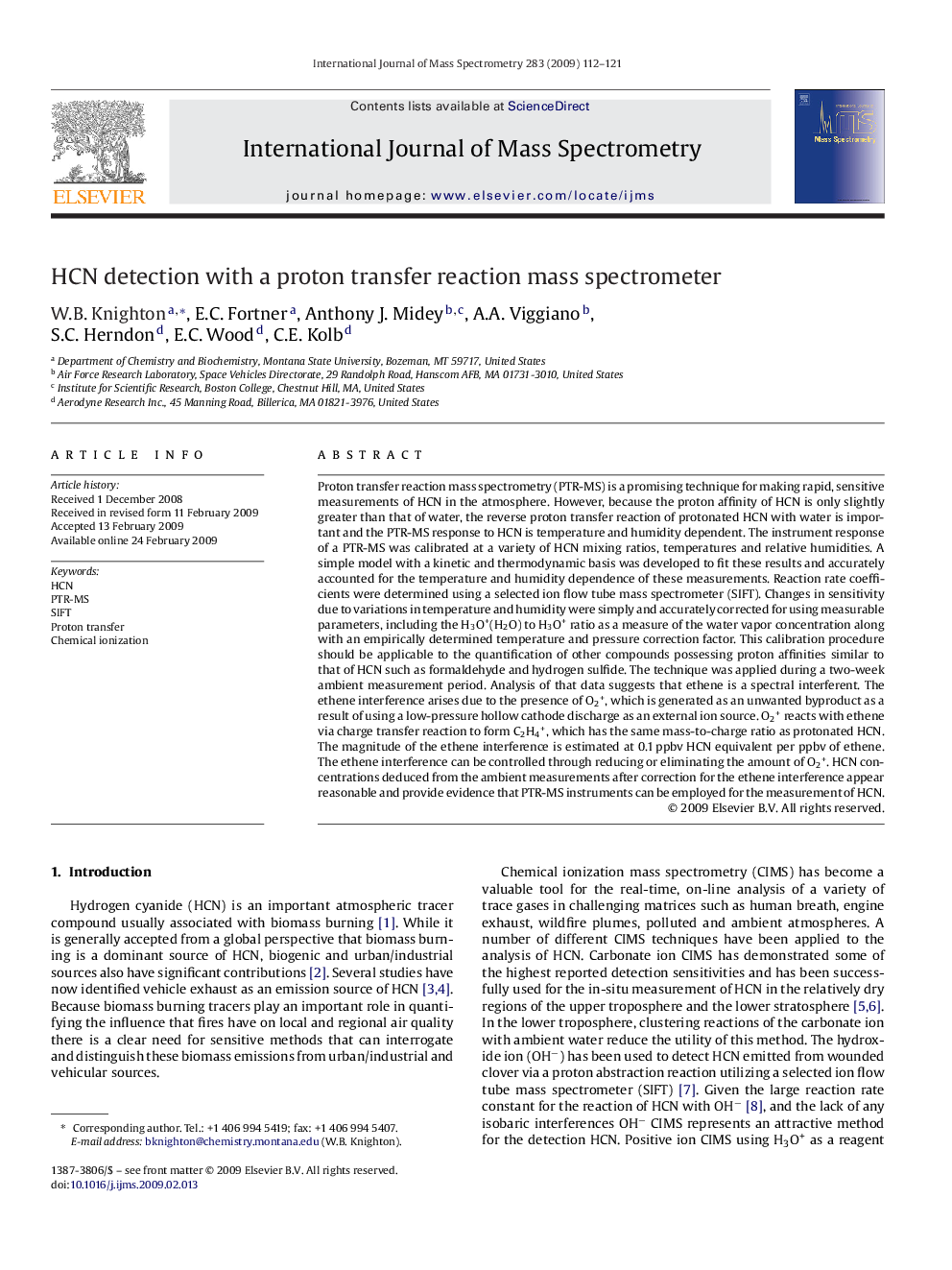| کد مقاله | کد نشریه | سال انتشار | مقاله انگلیسی | نسخه تمام متن |
|---|---|---|---|---|
| 1194168 | 1492341 | 2009 | 10 صفحه PDF | دانلود رایگان |

Proton transfer reaction mass spectrometry (PTR-MS) is a promising technique for making rapid, sensitive measurements of HCN in the atmosphere. However, because the proton affinity of HCN is only slightly greater than that of water, the reverse proton transfer reaction of protonated HCN with water is important and the PTR-MS response to HCN is temperature and humidity dependent. The instrument response of a PTR-MS was calibrated at a variety of HCN mixing ratios, temperatures and relative humidities. A simple model with a kinetic and thermodynamic basis was developed to fit these results and accurately accounted for the temperature and humidity dependence of these measurements. Reaction rate coefficients were determined using a selected ion flow tube mass spectrometer (SIFT). Changes in sensitivity due to variations in temperature and humidity were simply and accurately corrected for using measurable parameters, including the H3O+(H2O) to H3O+ ratio as a measure of the water vapor concentration along with an empirically determined temperature and pressure correction factor. This calibration procedure should be applicable to the quantification of other compounds possessing proton affinities similar to that of HCN such as formaldehyde and hydrogen sulfide. The technique was applied during a two-week ambient measurement period. Analysis of that data suggests that ethene is a spectral interferent. The ethene interference arises due to the presence of O2+, which is generated as an unwanted byproduct as a result of using a low-pressure hollow cathode discharge as an external ion source. O2+ reacts with ethene via charge transfer reaction to form C2H4+, which has the same mass-to-charge ratio as protonated HCN. The magnitude of the ethene interference is estimated at 0.1 ppbv HCN equivalent per ppbv of ethene. The ethene interference can be controlled through reducing or eliminating the amount of O2+. HCN concentrations deduced from the ambient measurements after correction for the ethene interference appear reasonable and provide evidence that PTR-MS instruments can be employed for the measurement of HCN.
A calibration method allowing for the accurate quantification of HCN with a PTR-MS using the H3O+(H2O)n distribution as a measure of water vapor concentration is described and demonstrated.Figure optionsDownload as PowerPoint slide
Journal: International Journal of Mass Spectrometry - Volume 283, Issues 1–3, 1 June 2009, Pages 112–121